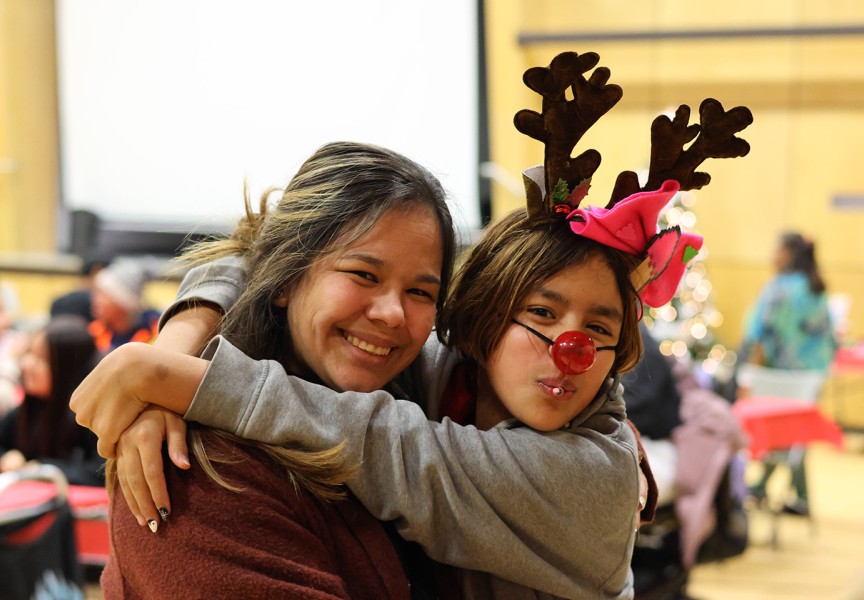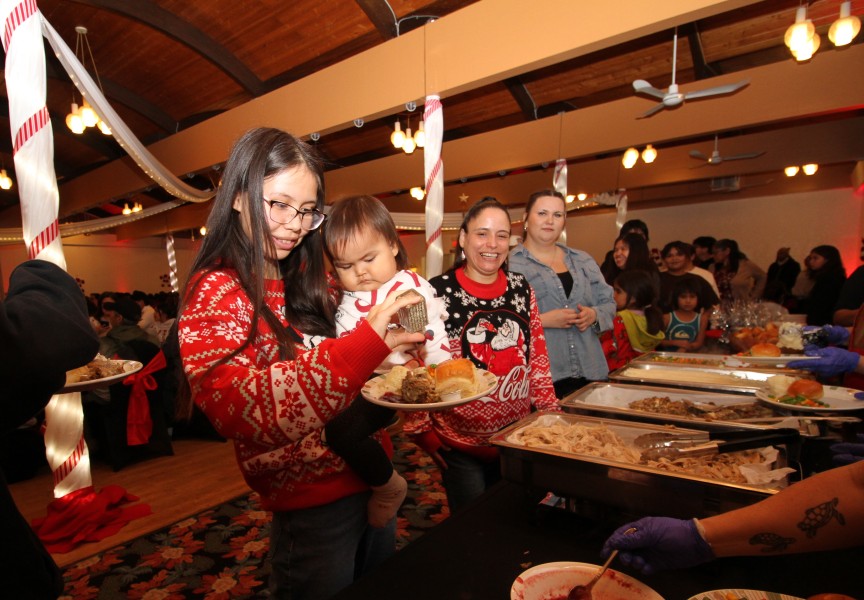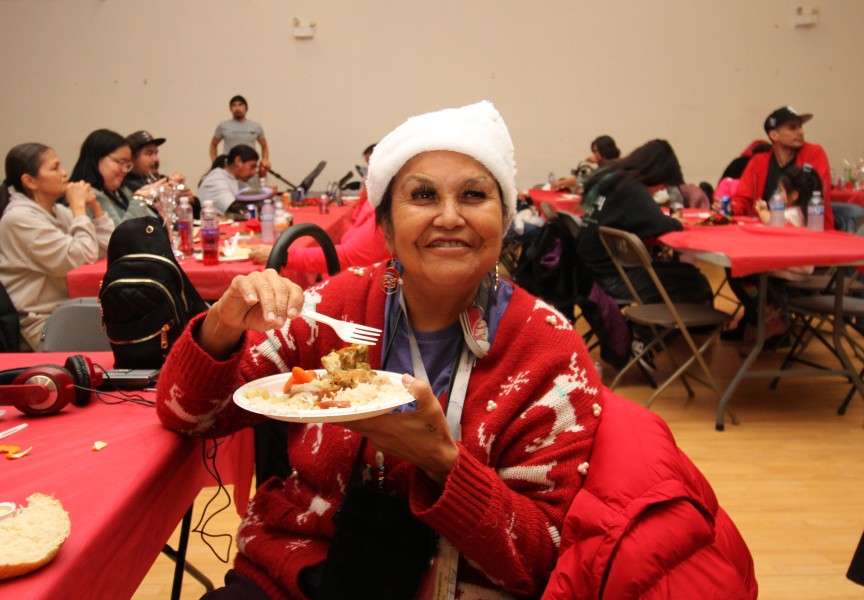The 7th Annual Vancouver Island Traditional Foods Conference was held Oct. 24 and Oct. 25 in Ucluelet. Hosted by Tukwaa?ath Nation (Toquaht), the conference brought together people interested in food security and getting back to more local sources of food gathered and prepared the old way.
The conference allowed people to teach, learn about and share indigenous foods from berries and other plants to ocean resources like salmon and seaweed.
The first day was dedicated mainly to presentations by guest speakers. The workshops looked at issues around first nations’ access to fisheries resources, to whaling culture to plants for food and medicine.
There was an instructional class on how to harvest, prepare and preserve seaweed and another on spirituality and meditation.
Jen McMillian talked about food plants of the Pacific Northwest like huckleberries, rosehips and the common dandelion.
Of the dandelion, she said the entire plant is edible from the root to the petals. Few people know that the dandelion is a rich source of vitamin A, B, C, D, potassium and calcium. It beats out grocery store produce like kale, beets and carrots in terms of nutrition.
But first one must make sure they are harvesting a true dandelion and not the false one. A true dandelion has hairless leaves and holds one flower per stem, while false dandelions have hairy leaves and many flowers on a single stem.
Young dandelion leaves can be picked in the early spring and used raw in salads or they can be boiled or sautéed. The longer into the growing season, the more bitter the leaves become.
The dandelion root can be dried, ground and used as a coffee substitute. The sap from the root has been used as medicine to aid digestion. The white sap from the stem of the dandelion can be used for the treatment of warts.
Another morning session led by Peter Ross of the Vancouver Aquarium focused on ocean pollution and its impacts on the food chain.
When one thinks of ocean pollution the first thought is usually the 2011 earthquake that rocked Japan and caused a massive tsunami. The tsunami surged inland washing tons of debris into the Pacific Ocean.
But ocean pollution began long before the 2011 tsunami.
From industry dumping chemicals into the air and ocean to untreated sewage, to fishing gear and trash being tossed into the sea, ocean pollution is coming from all directions.
Plastic trash and fishing gear is having a terrible impact on seabirds and marine mammals. Seabirds are dying by the thousands after ingesting small plastics like soft drink lids and hypodermic needles. Once swallowed, the birds cannot regurgitate the inedible materials and die a slow death.
More and more, sea mammals, including whales, are being found entangled in fishing gear and some mammels get caught up in the plastic rings that hold beverage containers together.
Ross talked about the Inuit whose diet consists mainly of seafood – fish, ocean mammals and shellfish. Thirty years ago the Inuit started to get sick and it was then that the Canadian government realized agricultural and industrial contaminants in the ocean were to blame.
They took their findings to the United Nations where a plan of action was eventually formulated.
Ross said we need to ask ourselves what we can do about ocean pollution.
“We have to work on this globally,” he advised.
On day two, the convention featured vendor tables where people could mingle and trade or buy wild food products.
At a nearby beach, a steampit was constructed with help from many volunteers. A steam pit is an ancient method of cooking for crowds. A long, shallow pit is dug on a sandy beach. When it is the right size some rocks are added and a wood fire is made and allowed to burn down to coals.
The coals are then covered with wet leaves selected from the nearby forest along with some shellfish and root vegetables.
Everything is covered over with leaves, cedar mats and sand to trap the heat and steam.
The contents of the steam pit were collected and offered up to the guests at lunch time.
The Vancouver Island & Coastal Communities Indigenous Food Network is a collective of members with a shared vision of a healthy future based upon reconnecting with First Nation cultural teachings and practices. The membership is made up of culturally knowledgeable food harvesters and gatherers, health professionals, community development workers and members of the scientific community.
Essentially, the Network hopes to build collaborative approaches in addressing issues of traditional food access and security.
To provide opportunities for people from rural and isolated communities to participate, the Vancouver Island & Coastal Communities Indigenous Food Network has developed a rotating regional meeting approach across Vancouver Island. On a quarterly basis gatherings are hosted in each of four island regions: north, south, east and west.
These regions are represented by three primary First Nations: Coast Salish, Kwakwakala and Nuu-chah-nulth. Since time immemorial these Nations have developed, maintained and evolved food gathering, harvesting and preserving approaches that are specific to their bio-region.
The conference has always focused on 4 pillars –nutrition, healing, safety and community.






